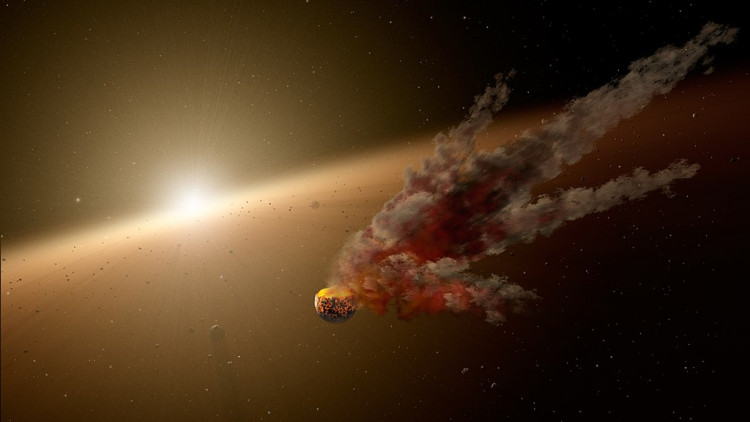A large asteroid, estimated to be the size of the Space Needle deck located in Washington, is colliding with the Earth's orbit on Christmas Day. As the world celebrates Christmas, the asteroid will zoom past Earth at 22,300 miles per hour.
The space rock, labeled 2014 SD224, was discovered back in September 2014 and immediately identified as an Aten asteroid, meaning that its orbit crosses that of our planet.
NASA's Center for Near-Earth Object Studies is now forecasting that 2014 SD224 will be nearest to our planet on the night of Dec. 25. Earthlings need not worry too much, though, since the rock is supposed to "safely" pass through us at a distance of 0.02 astronomical units, or 3 million kilometers. For the space agency, all such close approaches are also deemed "potentially hazardous" due to substantial regional damage that they are expected to inflict.
However, this is close enough for NASA to deem it a near-Earth object (NEO). NEOs are relics of the solar system, and NASA will use them to research the history of our host star and its orbiting planets.
NASA said on its website of the Jet Propulsion Laboratory (JPL): "NEOs are comets and asteroids that have been nudged by the gravitational attraction of nearby planets into orbits that cause them to enter Earth's neighborhood.
As the primitive, leftover building blocks of the solar system forming process, comets and asteroids provide clues to the chemical mixture that planets formed some 4.6 billion years ago.
The space rock is predicted to be between 90m and 210m, making it one of the largest asteroids to cross the Planet in December. To better bring this into context, at the upper limit, the asteroid can be larger than the Space Needle found in Seattle.
2014 SD224 will not be the only space visitor to our world during the Christmas season - two other much smaller rocks are said to be making close encounters with Earth on Christmas Eve and for several days after. However, one of these celestial bodies, named 2012 XE133, is estimated to measure up to 120 meters in diameter.
The next guest could also not be as impressive as the Geminid Meteor shower, which is predicted to be visible on the night of Dec. 13. The normally luminous event is known for creating brilliant fireballs and some stunning views, so watchers should be careful not to miss one of the most spectacular nights of 2020.






